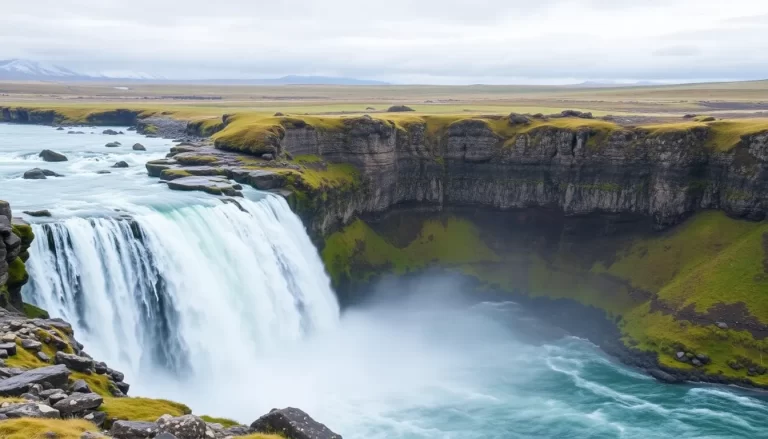Capturing moments through a lens can transform ordinary experiences into lasting memories, particularly during travel. However, many new camera owners often feel disheartened when their initial photos don’t meet their expectations. This article will unlock the secrets to maximizing your new camera, transforming your photographs from mediocre to magnificent.
Photography is an art that thrives on practice and knowledge. Even if you’re not a professional, understanding your camera can elevate your skills and ignite your passion for photography. Here, we explore ten invaluable tips that every new camera owner should embrace to truly harness the potential of their equipment.
Understanding Your Camera: The Importance of the Manual
The first step in making the most of your new camera is to familiarize yourself with its features. Every camera comes equipped with a manual, a treasure trove of information about the device’s functions and settings. While it may not be necessary to memorize every page, a basic understanding can significantly enhance your shooting experience.
Modern cameras are intricate machines, and their functionalities can vary widely across models. Knowing how to navigate the settings—whether it’s adjusting the focus mode or changing the ISO—will empower you to take better photos. A few hours spent with the manual can save you frustration later on, ensuring that you’re ready when the perfect shot presents itself.
Mastering Composition: The Heart of Great Photography
While having a high-quality camera is essential, it’s the photographer who ultimately makes the difference. Learning about composition will dramatically enhance your images. Understanding how to arrange elements within the frame can help you create visually captivating photographs.
Here are some fundamental compositional techniques to consider:
- Rule of Thirds: Divide your frame into thirds both horizontally and vertically. Place your subject at the intersections.
- Leading Lines: Use natural lines (like roads or rivers) to draw the viewer’s eye toward the focal point.
- Framing: Use elements in your surroundings to frame your subject, adding depth and context.
- Balance: Ensure that your composition feels balanced by distributing visual weight throughout the image.
- Negative Space: Don’t be afraid of empty space; it can emphasize your subject and create a more impactful image.
Over time, applying these principles will become second nature, helping you develop a photographer’s intuition.
Demystifying the Exposure Triangle
Understanding exposure is vital for any photographer. The exposure triangle consists of three critical elements: shutter speed, aperture, and ISO. Mastery of these components will give you greater control over your camera and the ability to create the desired effect in your images.
- Shutter Speed: Controls how long the camera’s sensor is exposed to light. Faster speeds freeze motion, while slower speeds create motion blur.
- Aperture: Refers to the opening of the lens and affects the depth of field. A wider aperture (smaller f-number) creates a blurred background, while a narrower aperture keeps more of the scene in focus.
- ISO: Measures the sensor’s sensitivity to light. A higher ISO is useful in low-light situations but can introduce noise to your images.
Experimenting with these settings will help you understand their impact on your photos, allowing you to achieve the desired exposure effectively.
The Art of Light: Timing and Positioning
Light is the essence of photography. Different lighting conditions can dramatically affect the mood and quality of your images. The golden hours—shortly after sunrise and before sunset—offer soft, diffused light, which is often more flattering than harsh midday sun.
Consider the direction of light when composing your shot:
- Shooting with the light behind you illuminates your subject effectively.
- Side lighting can create depth and texture, enhancing dimension.
- Backlighting can produce stunning silhouettes but requires careful positioning.
By being mindful of light, you can elevate your photography to the next level.
Creative Challenges: Push Your Boundaries
Staying inspired is crucial for any photographer. One effective way to enhance your skills is by setting personal challenges. Engaging in creative exercises can help you think outside the box and explore new photographic avenues.
Here are some ideas for challenges:
- Take a photo of a different subject every day.
- Focus on a specific theme for a week, such as portraits or landscapes.
- Experiment with different settings on your camera to see the impact on your shots.
These challenges will not only improve your technical skills but also keep your passion for photography alive.
Always Have Your Camera Ready
To truly improve your photography, it’s essential to make your camera a part of your daily life. Practice is crucial, and the best way to get comfortable with your new equipment is to carry it with you wherever you go.
Here are practical tips to ensure you always have your camera on hand:
- Store your camera in a convenient location, such as next to your keys or by the door.
- Set reminders on your phone to take your camera when you go out.
- Make it a habit to take at least one photo each day, regardless of the occasion.
Increased exposure to different environments and subjects will sharpen your skills and enhance your creativity.
Investing in Lenses: The Power of Prime
If your camera allows interchangeable lenses, consider adding a prime lens to your collection. A prime lens typically has a fixed focal length, which encourages you to move around and think critically about composition.
Here are some advantages of using a prime lens:
- Wider apertures allow for better performance in low light.
- They offer superior image quality compared to many zoom lenses.
- Using a prime lens can help you develop better framing and composition skills.
Affordable options, such as the 50mm f/1.8, are available for most camera brands and can make a significant difference in your photography.
Exploring RAW Format: The Key to Control
When shooting photos, consider using the RAW format instead of JPG. RAW files capture all the data from the camera sensor, offering more flexibility in post-processing. This means you can make more significant adjustments without compromising image quality.
Think of it this way: RAW files are like an unedited canvas, while JPGs are the finished artwork. By starting with a RAW file, you maintain the ability to fine-tune exposure, color balance, and sharpness, resulting in a polished final image.
The Importance of Editing and Curation
Editing is a crucial part of the photographic process. Even minor adjustments can elevate a good photo to great. Familiarizing yourself with editing software, such as Adobe Lightroom or Snapseed, can greatly enhance your images.
Additionally, developing a critical eye for curation is essential. Here are some tips:
- Be selective: Only share your best work to maintain a strong portfolio.
- Seek feedback: Constructive criticism from peers can help refine your skills.
- Learn to recognize your unique style and preferences as a photographer.
Through editing and careful selection, you can create a cohesive body of work that truly represents your artistic vision.
Persistence: The Key to Mastery
Photography is a journey that requires patience and dedication. Success often comes to those who persevere through challenges. Many renowned photographers started with little knowledge and overcame setbacks through practice and commitment.
Remember, the more you shoot, the more you learn. Embrace your passion for photography, and don’t hesitate to explore different genres and techniques. As you continue to nurture your skills, you’ll find that the world of photography opens up to you in exciting ways.







